World premiere of the EV3 – or: how Kia shrunk the EV9
At first glance, the production model now presented has changed surprisingly little compared to the Concept EV3 study shown in October 2023 – as was the case with the large EV9 (and also with its sister brand Hyundai with the Concept45 study and the Ioniq 5 production model), when the concept car was extremely close to the final product. In the case of the EV9, we know that the study was only designed after the series design. Looking at the final EV3, we can only assume it was a similar situation.
The design with the now typical Kia daytime running lights (the EV6 was also adapted to the design language with the current facelift) is more or less familiar. Still, some facts and figures about the compact model are new: the EV3 is 4.30 metres long, 1.85 metres wide and 1.56 metres high. At 2.68 metres, it offers the same wheelbase as the Sportage combustion model, which is noticeably larger at 4.52 metres, providing the EV3 with plenty of interior space and compact exterior dimensions. Specifically, Kia puts the headroom at 1,015 mm at the front and 955 mm at the rear. Legroom in the front is 1,060 mm, and 950 mm in the rear. Nevertheless, the load compartment offers between 460 and 1,20 litres of volume. And there is an additional 25-litre frunk under the front bonnet for stowing the charging cable, for example.
Looking at the competition – Kia says it targets models such as the VW ID.3, Cupra Born, Volvo EX30, Smart #1 or Renault Mégane E-Tech Electric with the EV3 – the frunk is a relatively rare feature. Apart from the Kia, only the Volvo offers the storage compartment, although all models mentioned are based on purely electric platforms. In addition to the frunk, and unlike the MEB rear-wheel drive models, the Kia also accommodates the drive under the front bonnet.
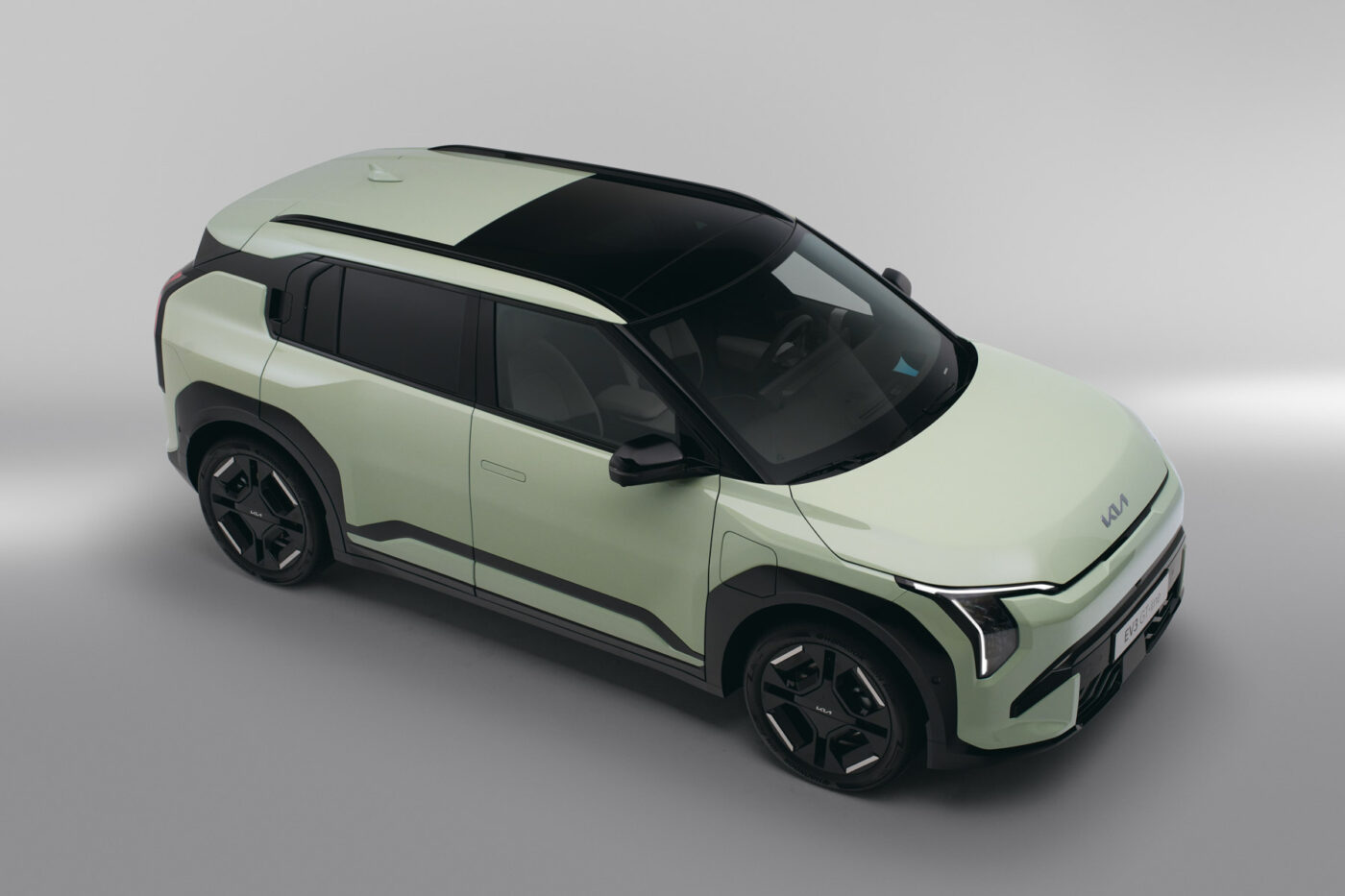
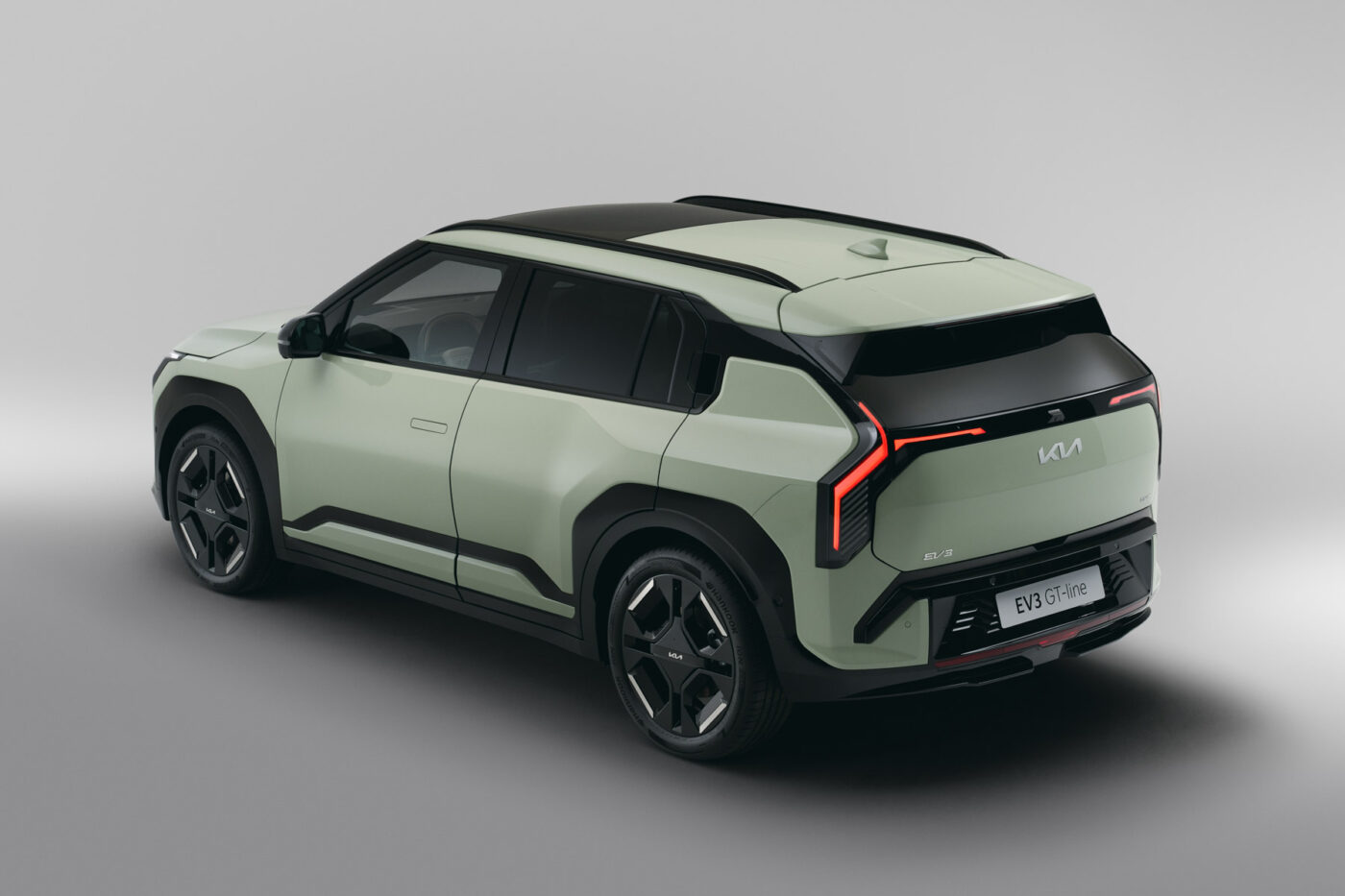
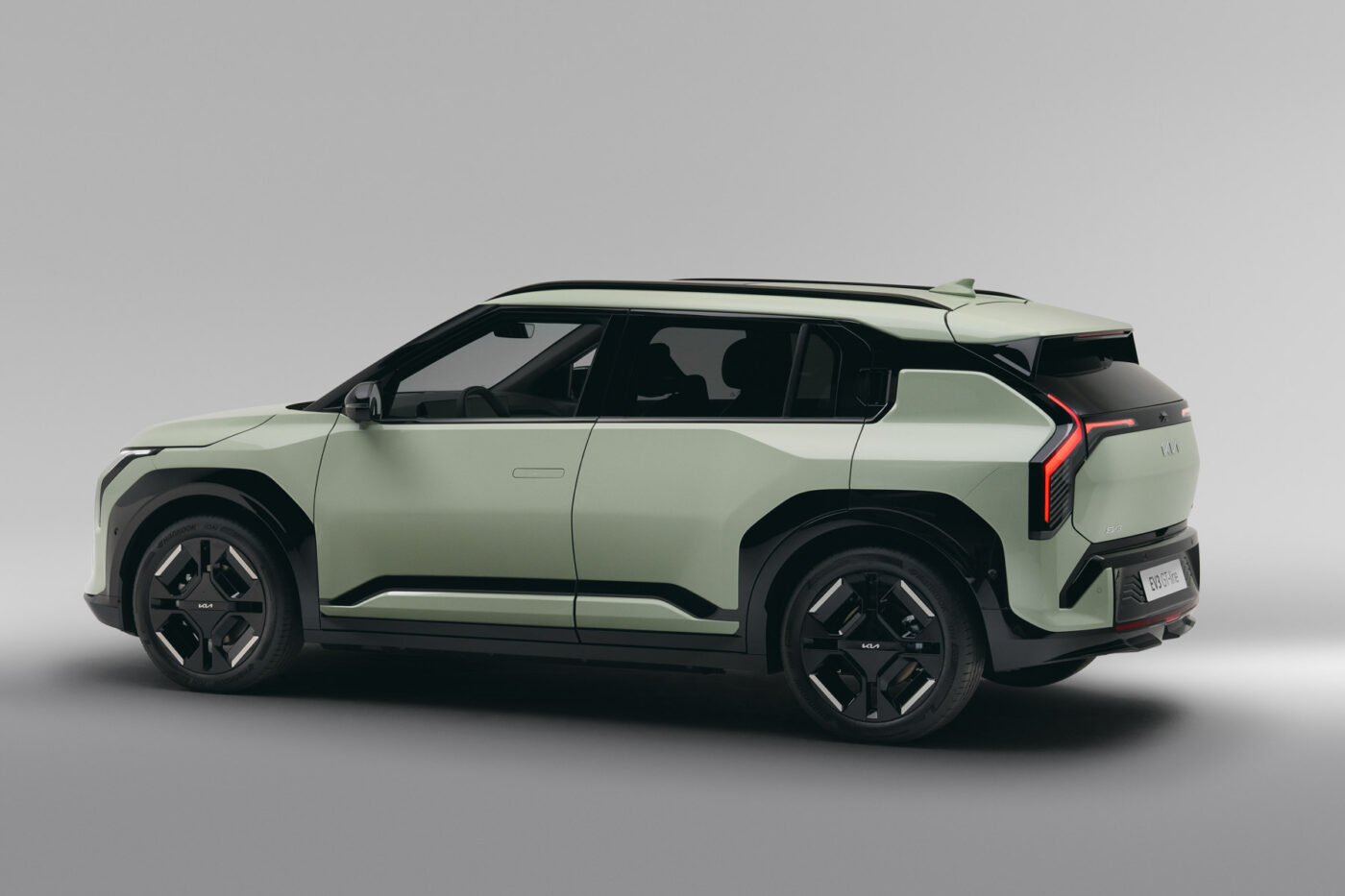
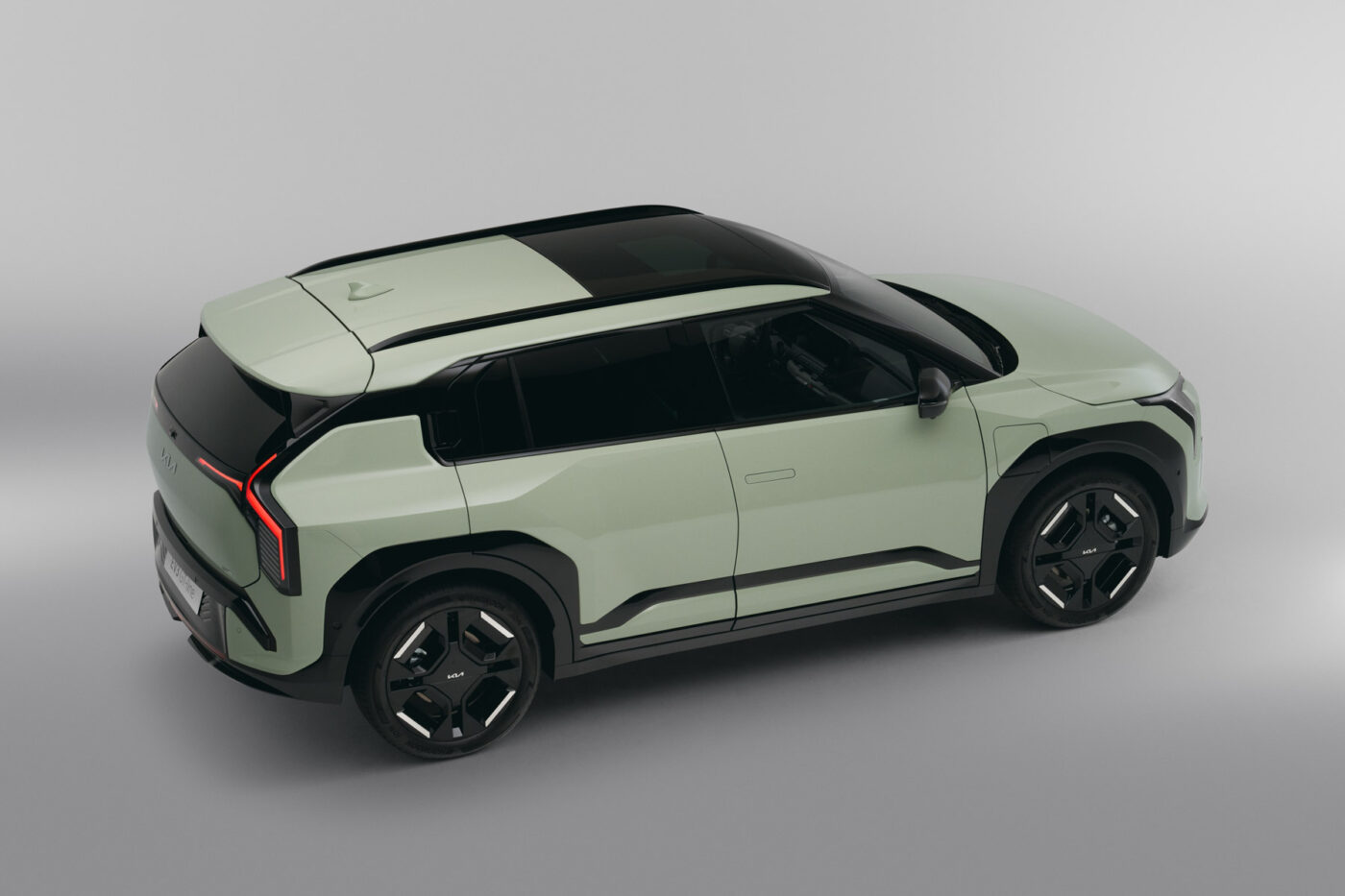
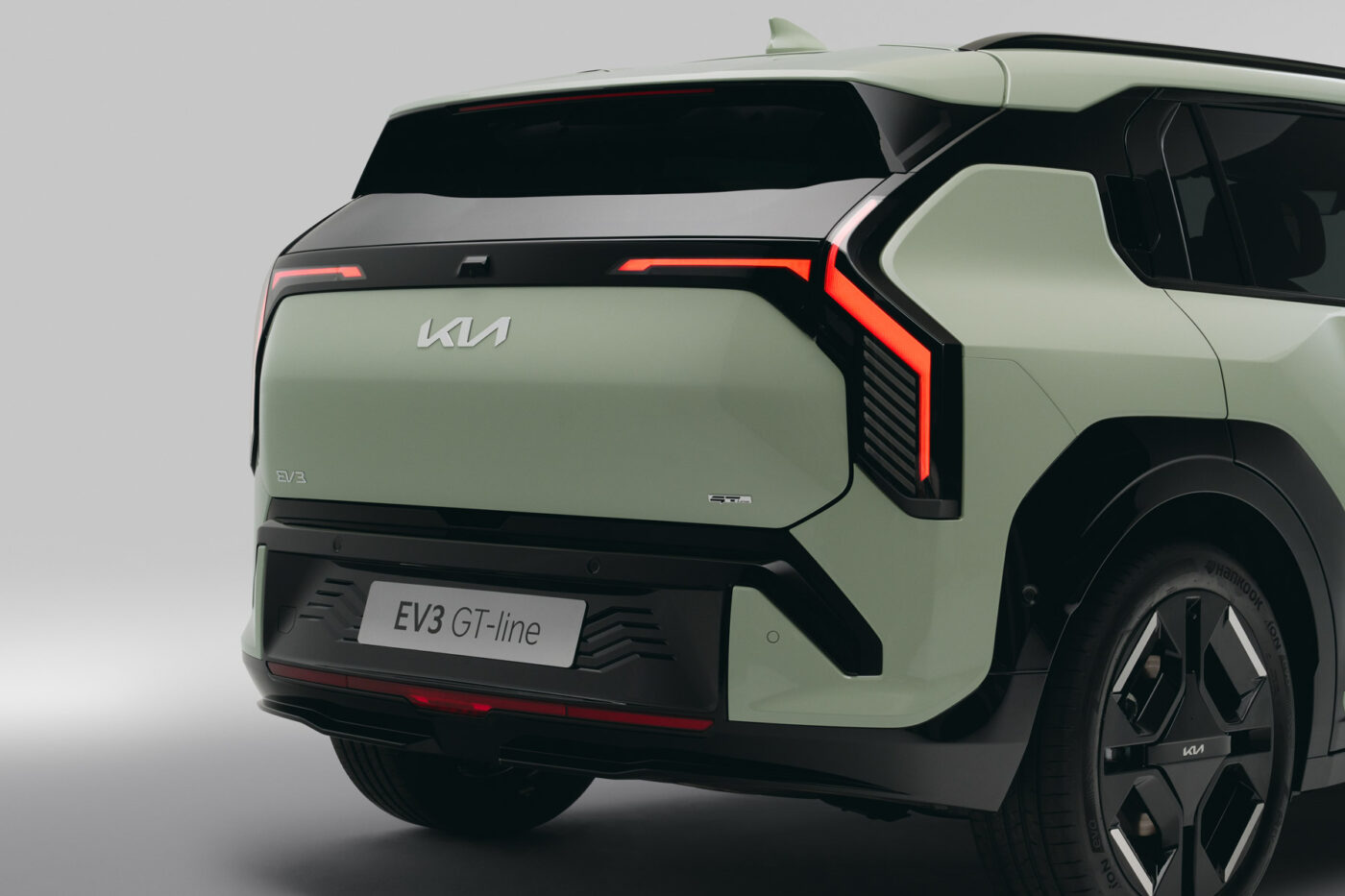
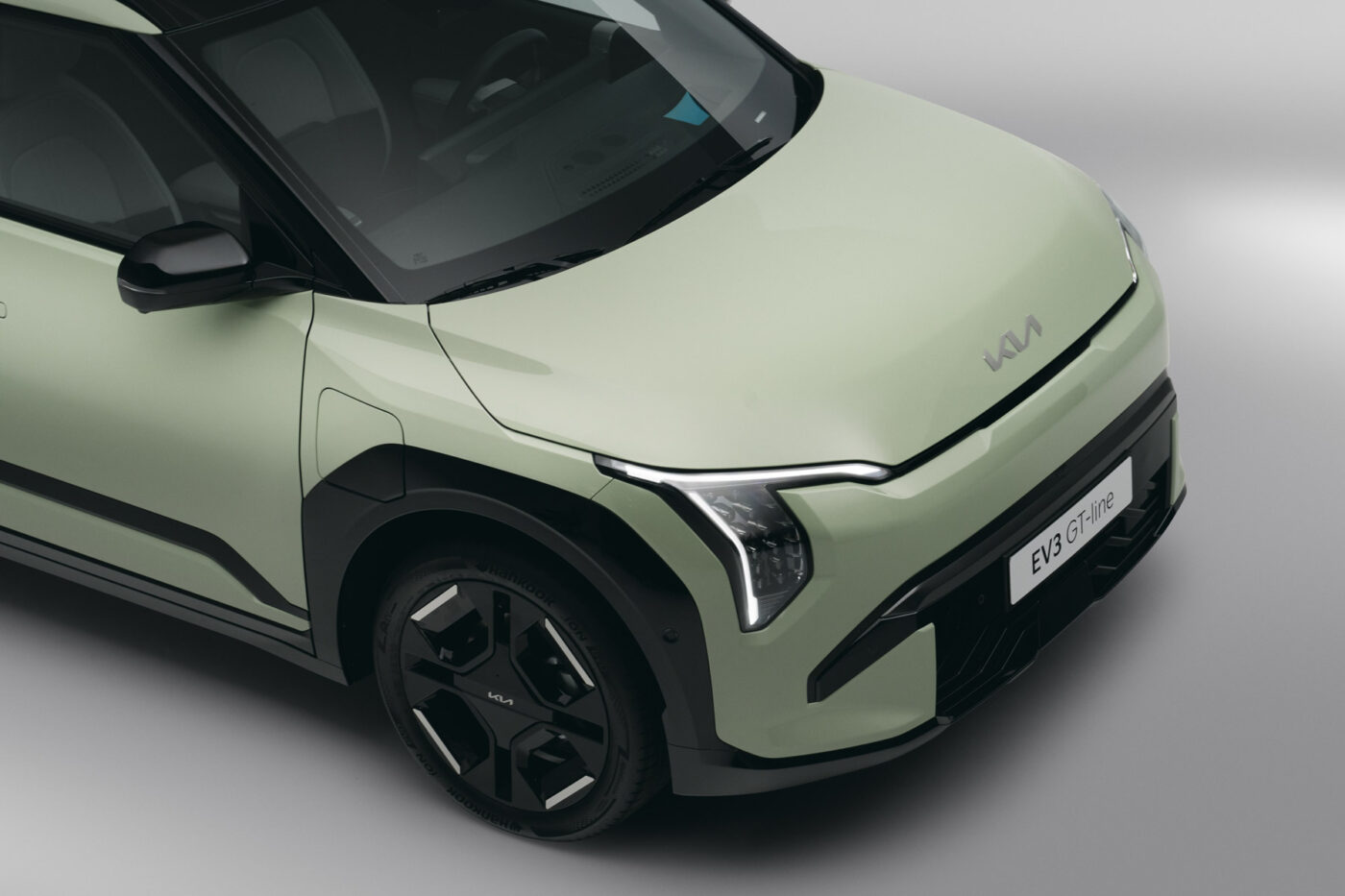
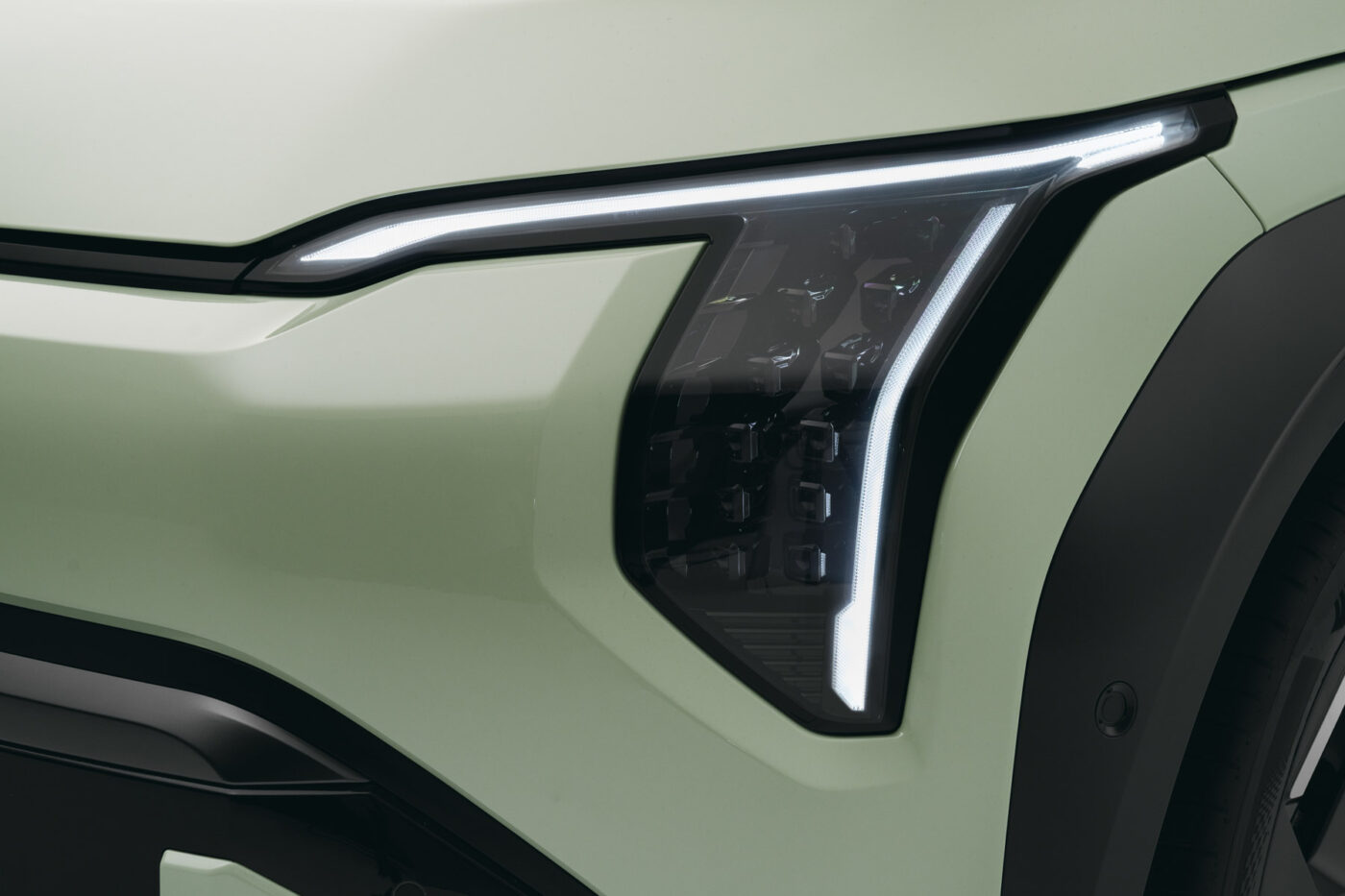
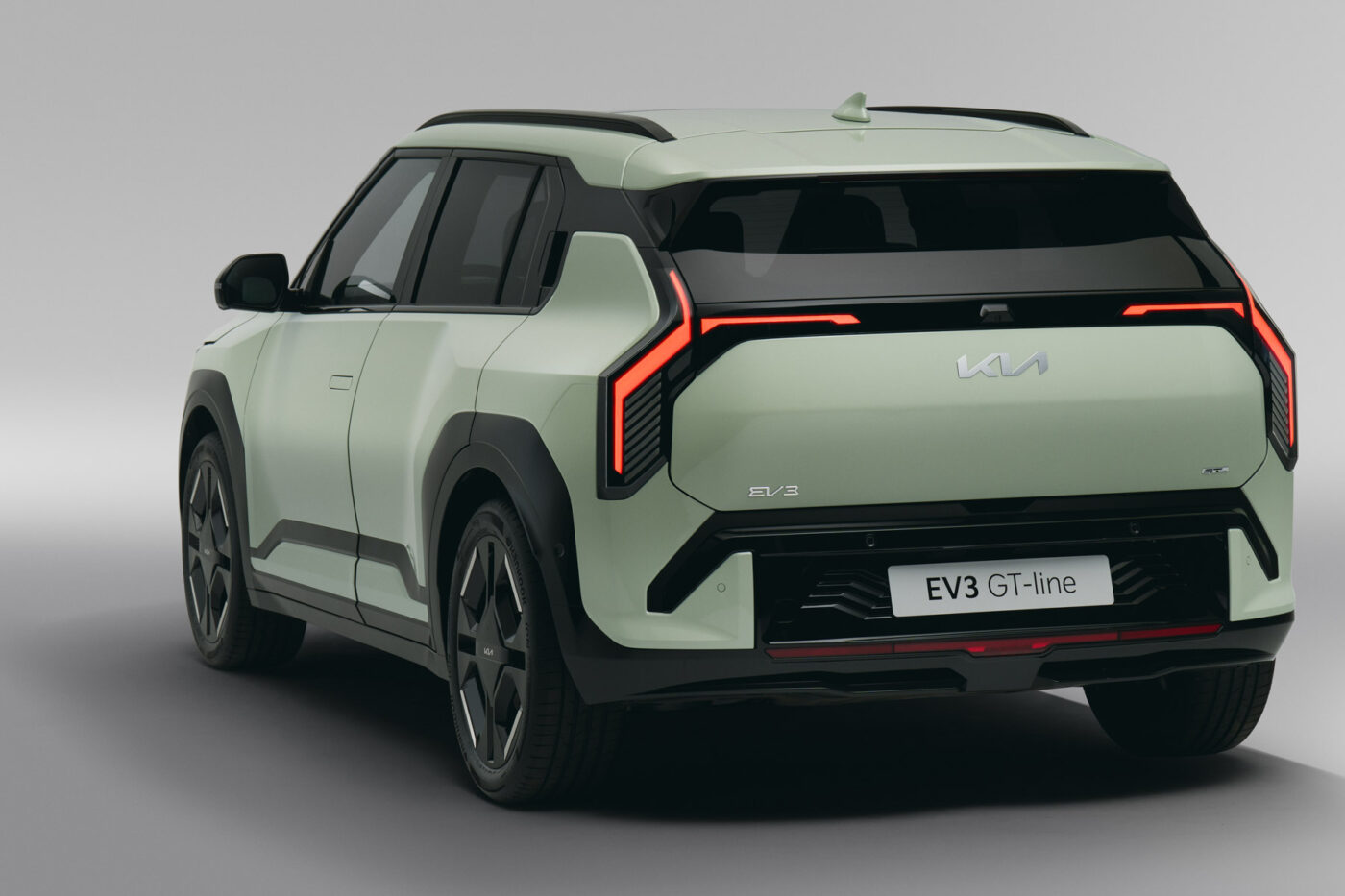
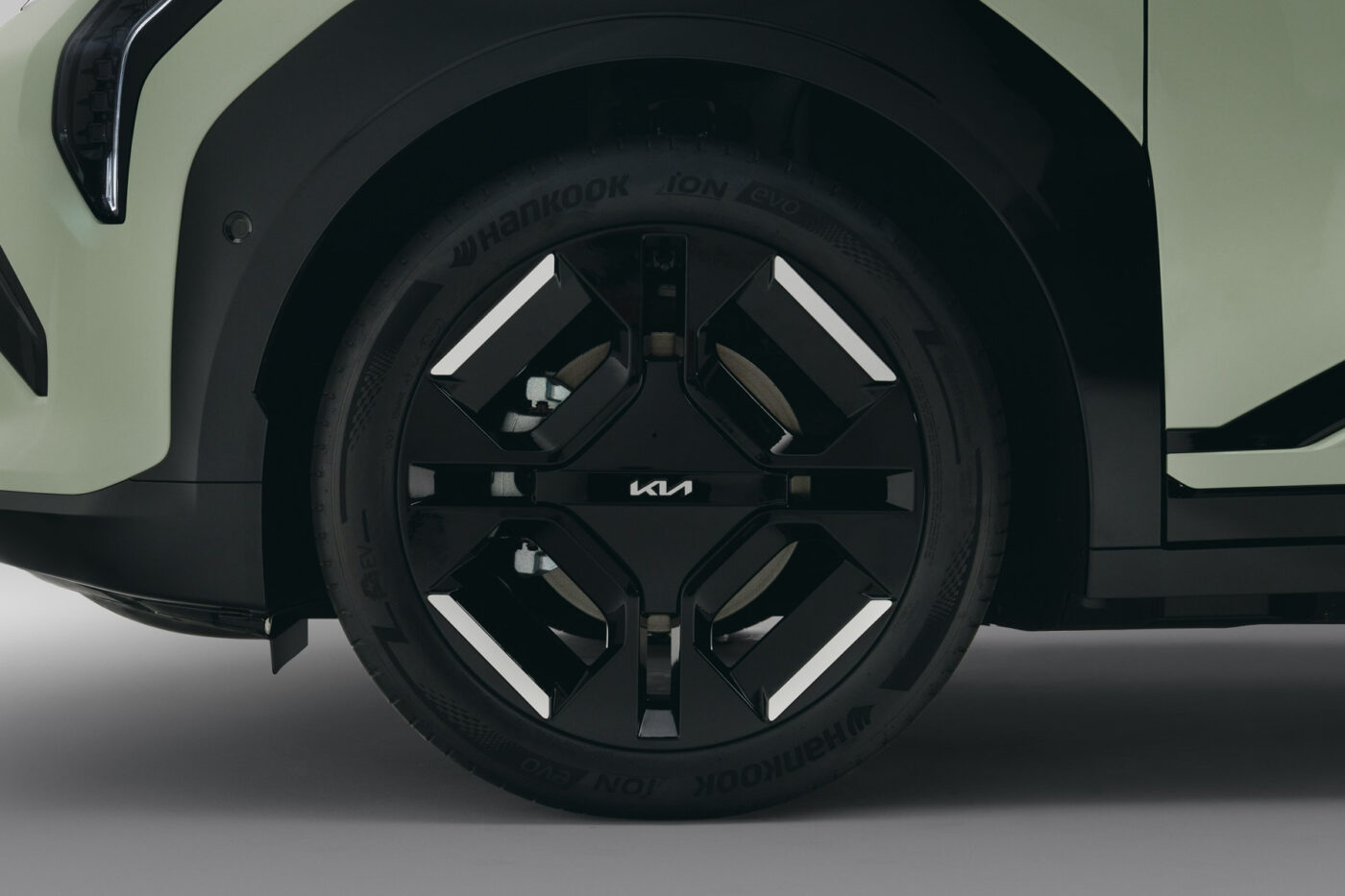
According to information from Kia Germany, the EV3 will be offered with a 150 kW front motor when it launches in the fourth quarter of 2024. Kia is already familiar with this drive layout from the EV5, which has yet to be available in Europe. The larger EV6 and EV9 models are known to be available as rear-wheel drive or all-wheel drive models.
The battery options also come from the 4.61-metre-long EV5: The standard model gets a 58.3 kWh battery, while the EV3 Long Range has an 81.4 kWh battery. That allows for WTLP ranges of 410 and 560 kilometres, respectively – these are still provisional figures. Kia gave these figures in a presentation for the media prior to the launch. However, the official announcement mentions up to 600 kilometres for the EV3 Long Range – the exact WLTP values will only be available later anyway.
As the electric motor delivers 150 kW in both cases, the standard model accelerates to 100 kph in 7.4 seconds, slightly faster than the Long Range version at 7.7 seconds – the smaller battery is simply lighter.
| EV3 Standard Range | EV3 Long Range | |
|---|---|---|
| Drive | FWD | FWD |
| Power | 150 kW | 150 kW |
| Acceleration | 7.4 s | 7.7 s |
| WLTP range | 410 km* | 600 km* |
| Battery capacity | 58.3 kWh | 81.4 kWh |
| Charging capacity DC | 102 kW | 128 kW |
| Charging time DC 10-80% | 31 min | 31 min |
*preliminary values
The close technological relationship to the EV5 has already made it clear. Moreover, the EV3 is based on the more cost-effective 400-volt version of the E-GMP platform, not the 800-volt version like the EV6 and EV9. High charging capacities beyond 200 kW are thus not available in the EV3. Specifically, Kia specifies a peak output of 102 kW for the base model, while up to 128 kW is possible with the 81.4 kWh battery – in both cases, charging from ten to 80 per cent takes “around 30 minutes.” Kia later specified 31 minutes. The car has an 11 kW onboard charger for AC charging, which also supports vehicle-to-load, already known from other models for operating external devices with power from the drive battery. The EV3 is also equipped for bidirectional charging, according to information we received from Kia Germany prior to the launch. That means the built-in technology also supports vehicle-to-grid or vehicle-to-home. It remains to be seen exactly when this will be offered in Germany. However, the basis is on board.
For fast charging under all conditions, there is also a battery preconditioning system that brings the battery to the ideal temperature before charging – either automatically during a charging stop integrated into the route planning or manually. Kia also claims to have improved its route planning. The system will offer a better response time, calculate the charging process with a dynamically selectable charge level, and consider the desired charge level at the destination – for example, if you don’t want to arrive with an empty battery. Plug&Charge is also available to simplify the charging process with automated authorisation and billing. Overall, Kia claims that taking into account the Long Range variant’s range, consumption, etc., the 580-kilometre journey from Frankfurt to Paris will only require one charging stop – and will be 40 minutes faster than the aforementioned competitors. However, Kia did not measure these 40 minutes, but simulated them using the “A Better Routeplanner” tool.
The EV3’s spacious and “highly functional” cabin will have a modern lounge character to ensure that passengers feel comfortable on such long journeys. Kia promises that five people will be able to sit comfortably. However, as is usual in the class, the rear seat is likely to be a little cramped above a certain height, and according to the pictures, the EV3 cannot exceed the class standards here, either. However, in combination with the front seat adjustment, a few centimetres can make the difference between being comfortable in the rear seat and not. If the rear seat is not occupied, the “Relaxation” seats in the front can be set very flat for a relaxing break during charging stops.
The operating concept is familiar from the large EV9 – in fact, the displays in the EV3 are the same size. Information for the driver is shown on a 12.3-inch cockpit display. To the right of this is a 5.3-inch area where some climate settings can be made. The 12.3-inch central touchscreen for infotainment is located to the right of this. The screen will also be easily accessible for the front passenger to access entertainment and navigation functions. Streaming video content from platforms such as YouTube or Netflix via the touchscreen will also be possible, and small in-car games for charging breaks have also been announced.
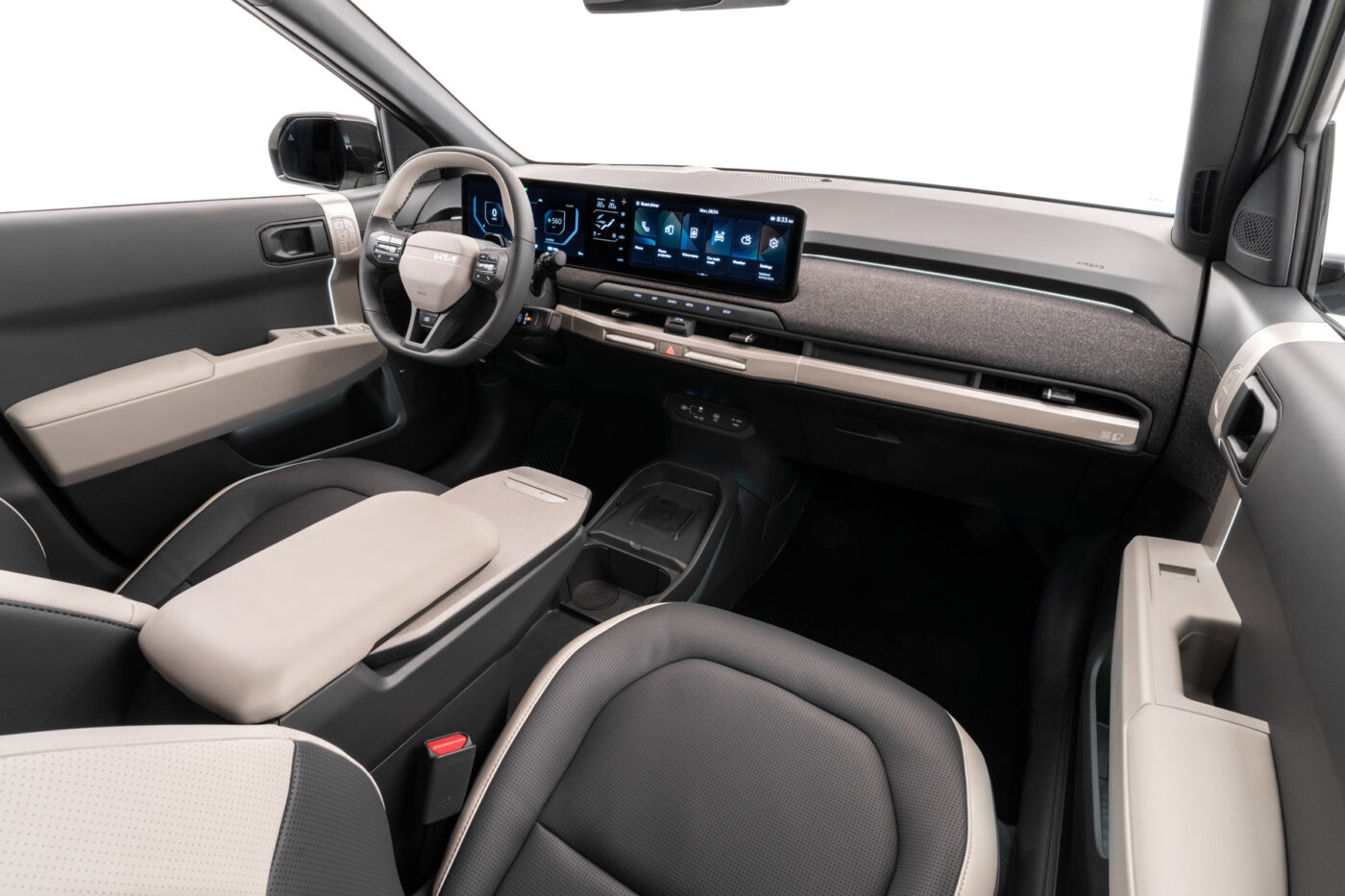
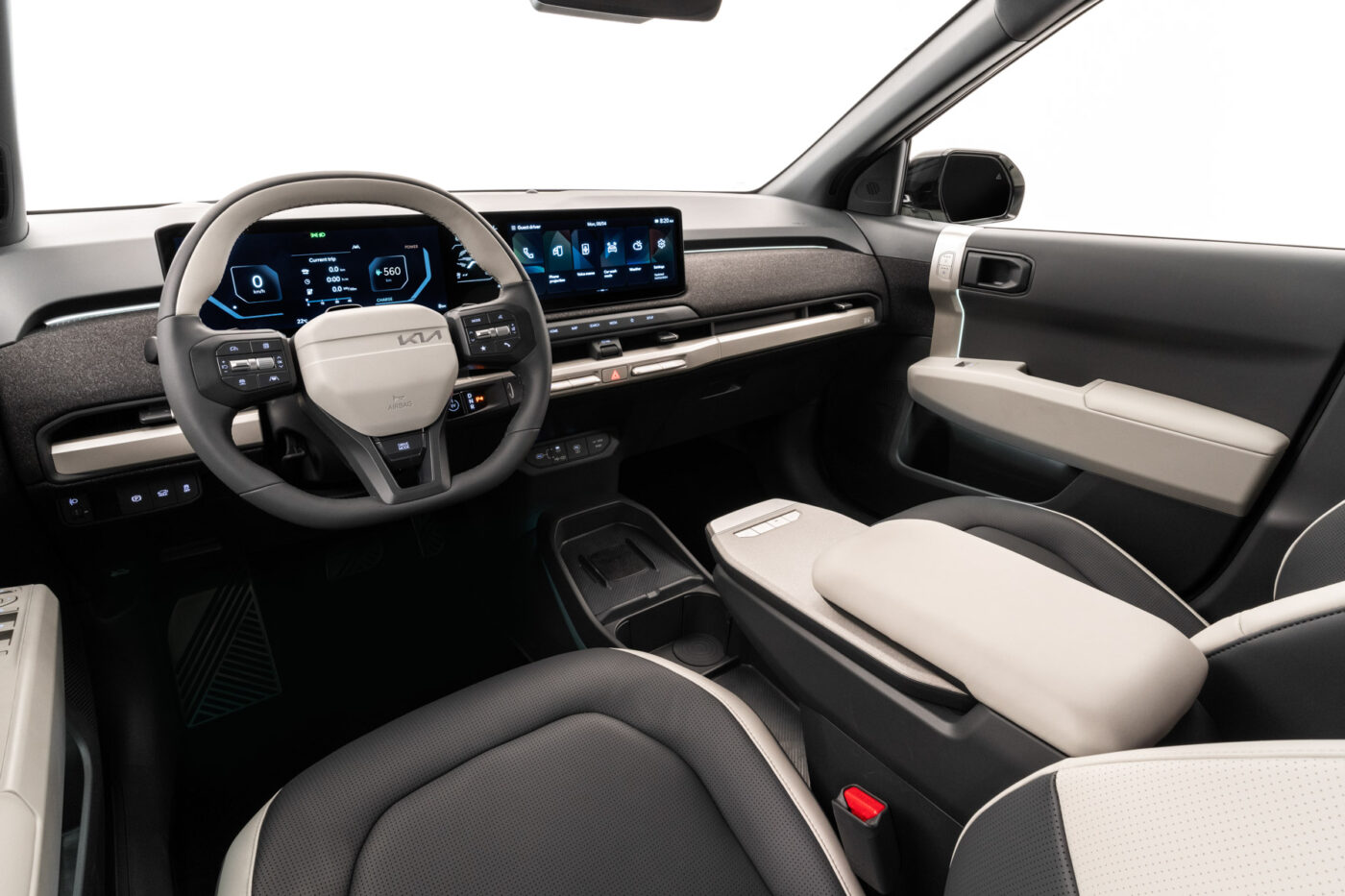
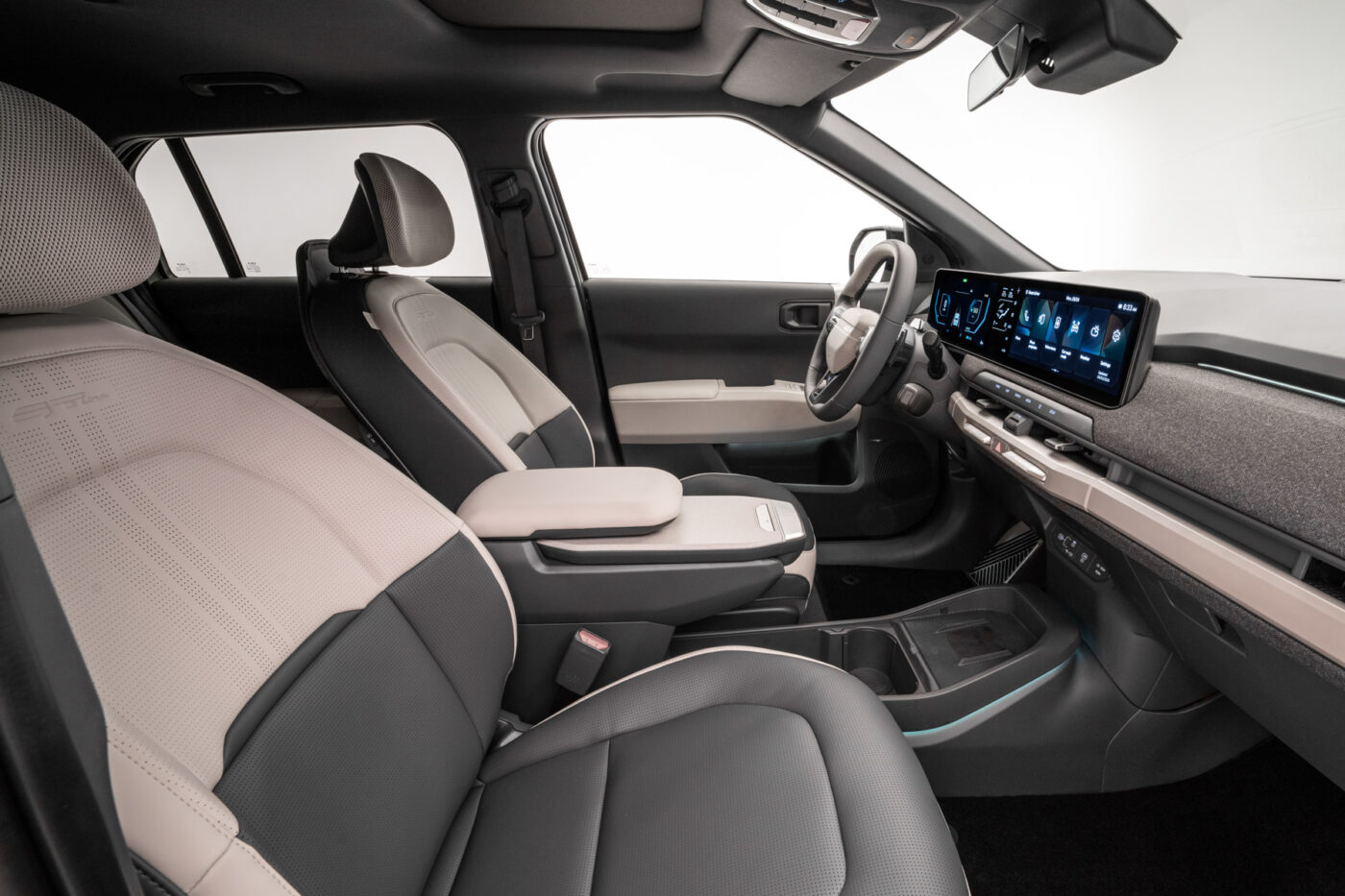
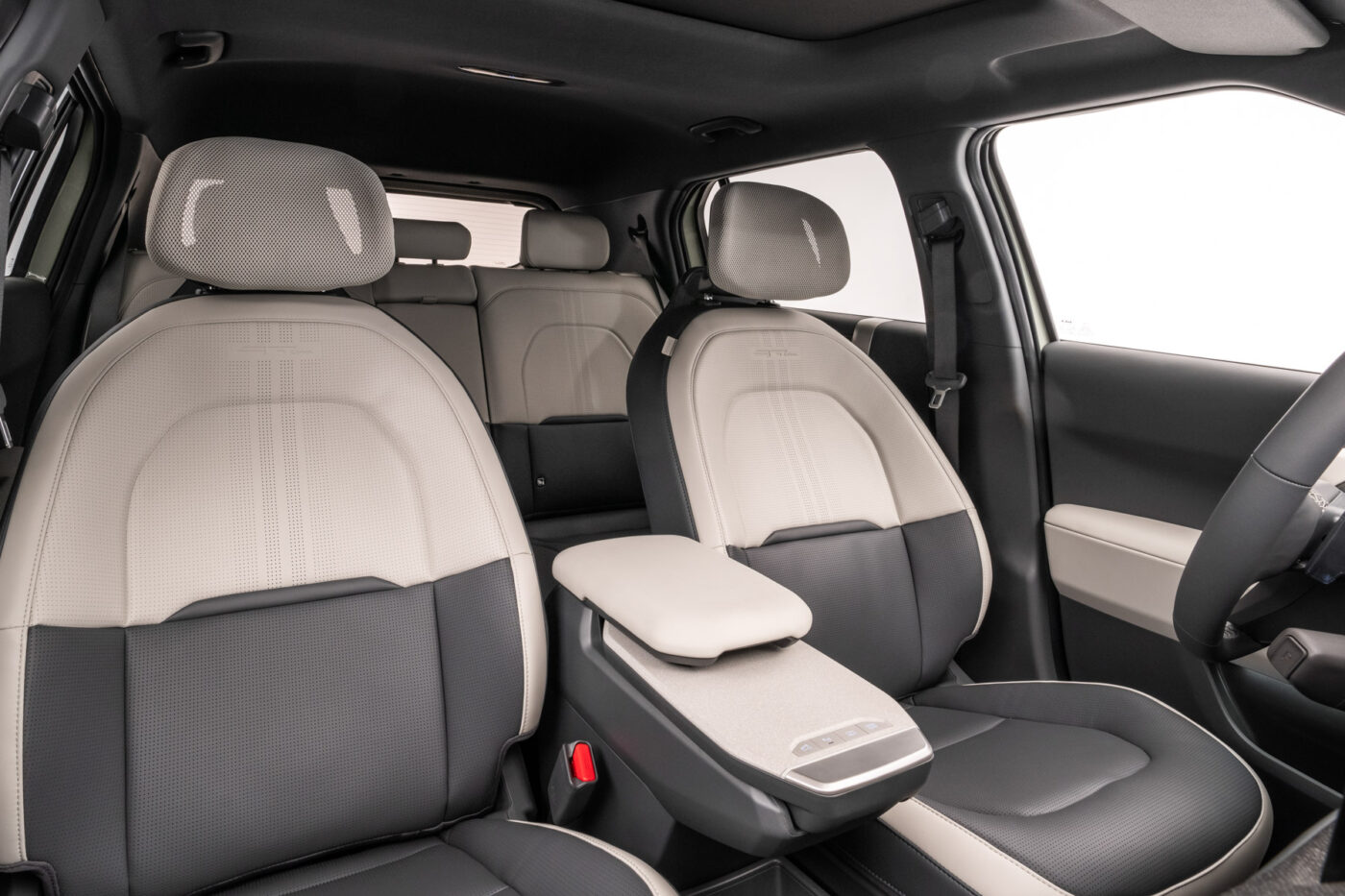
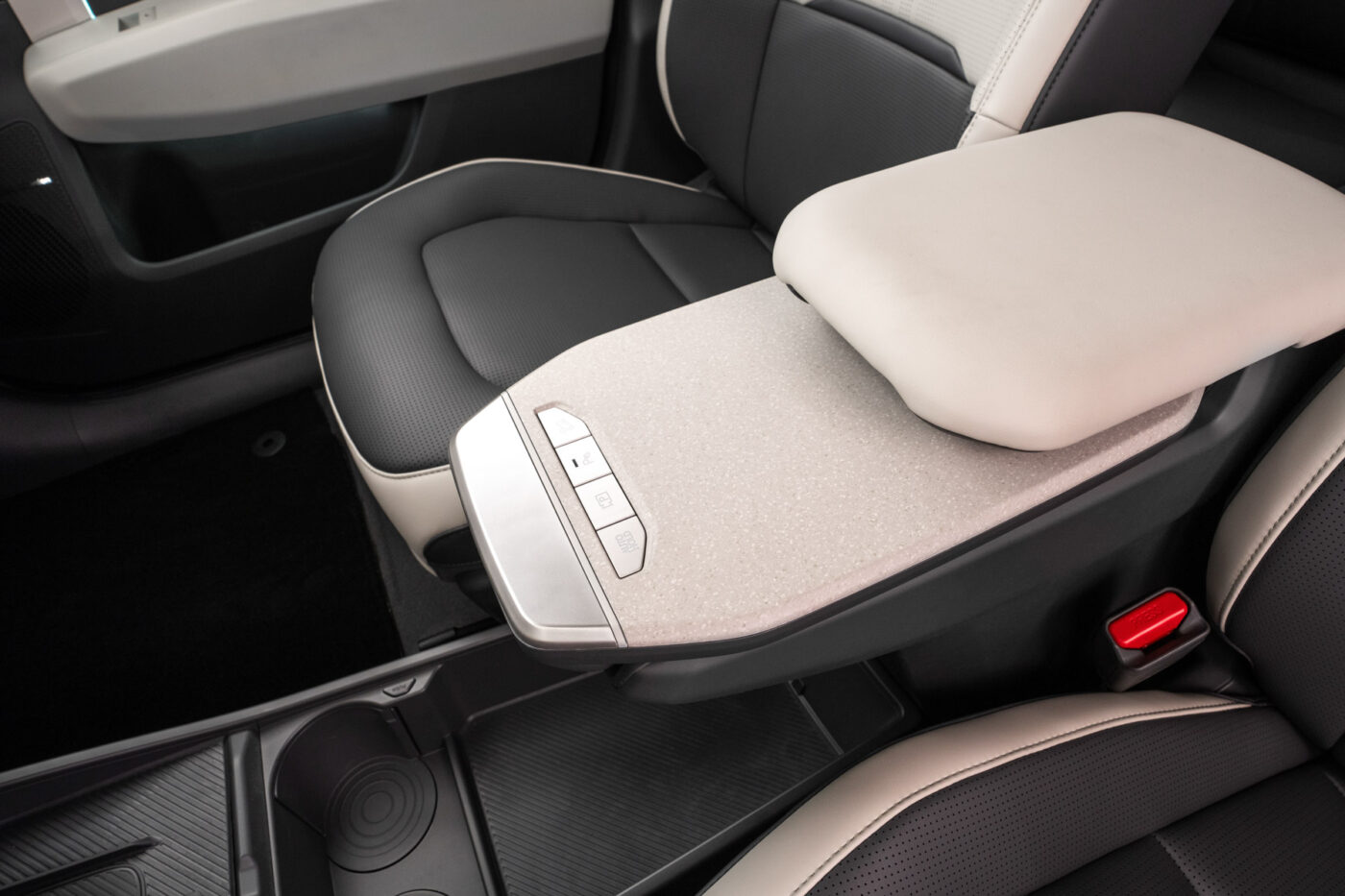
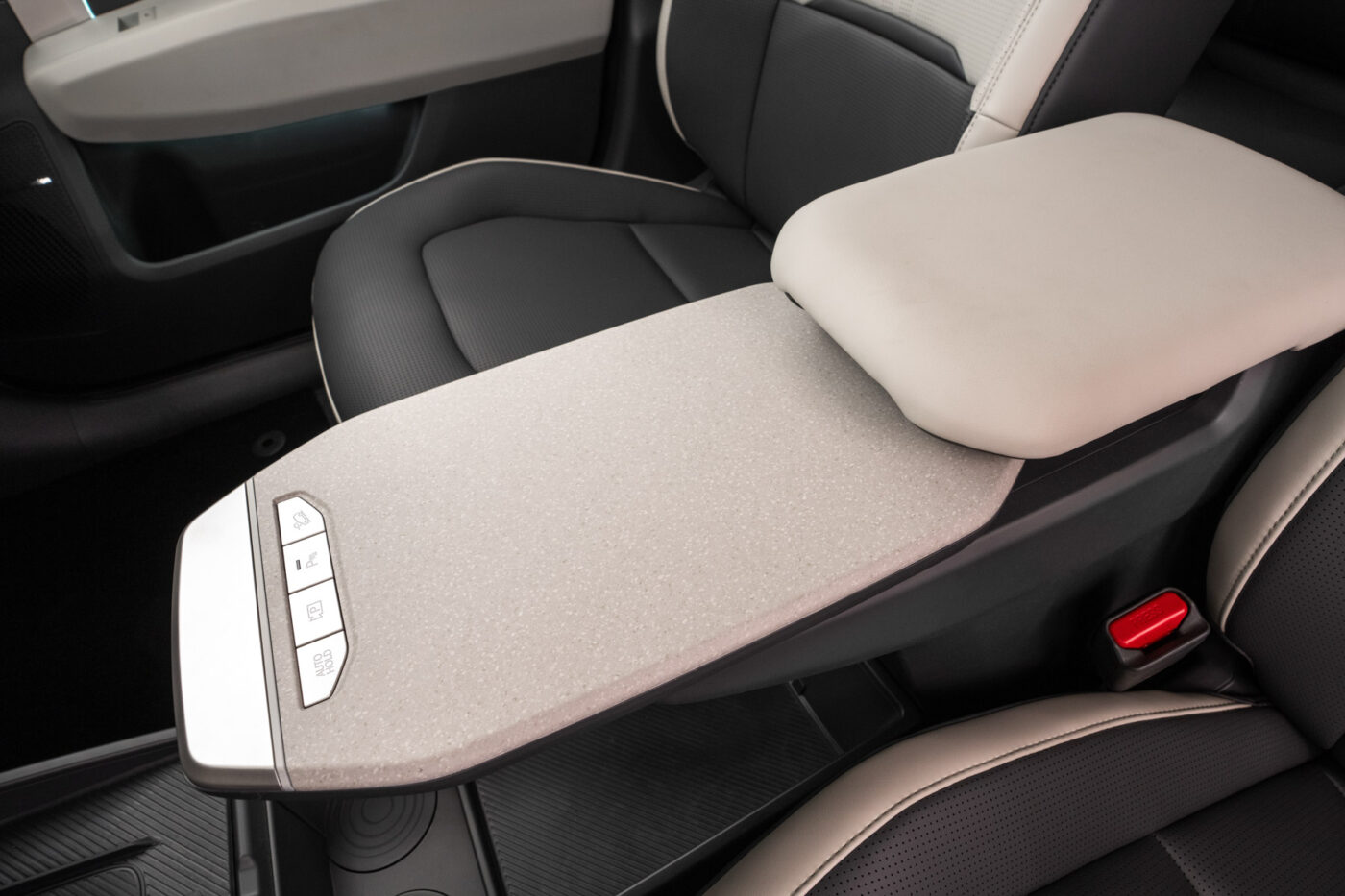
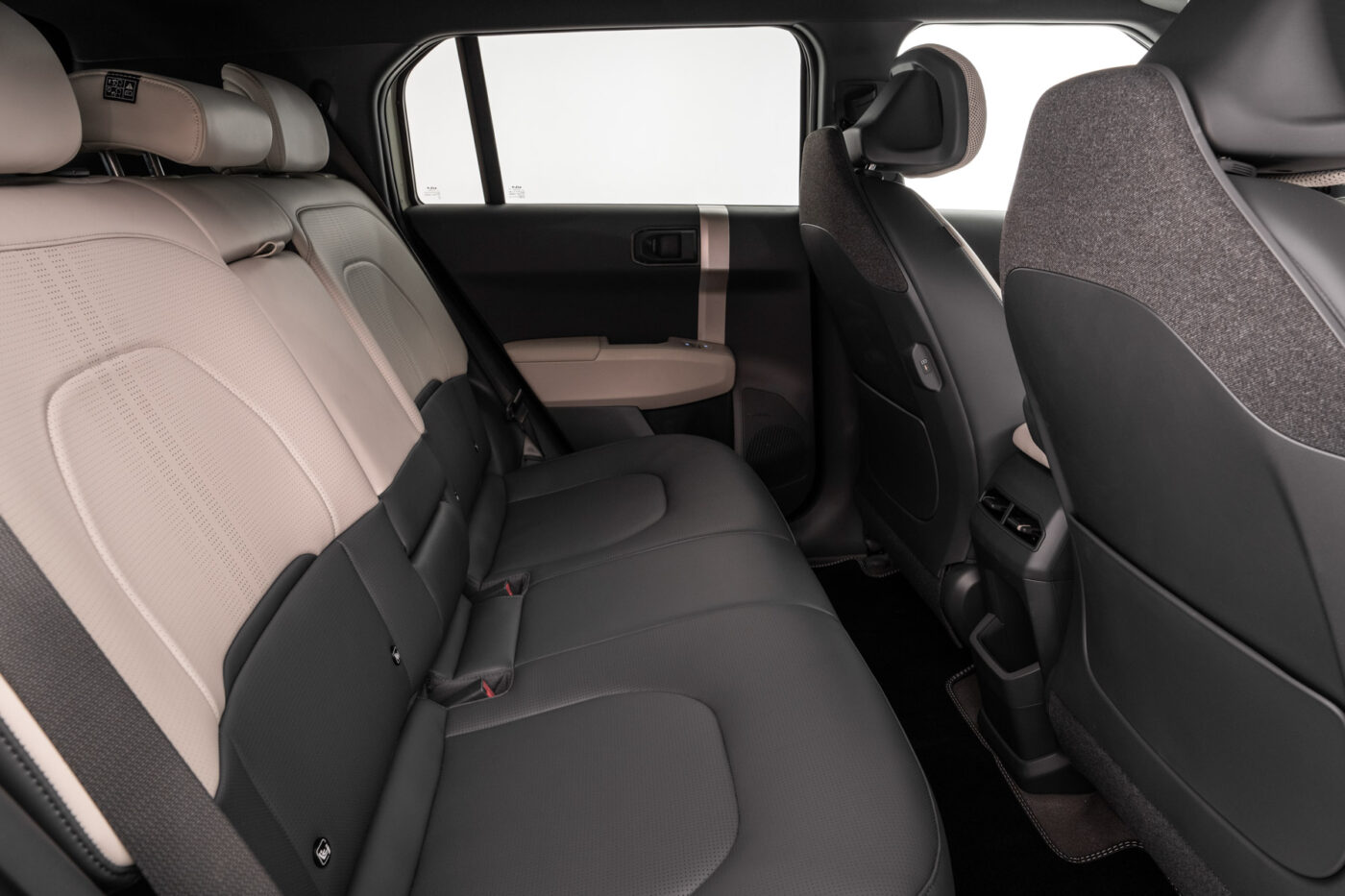
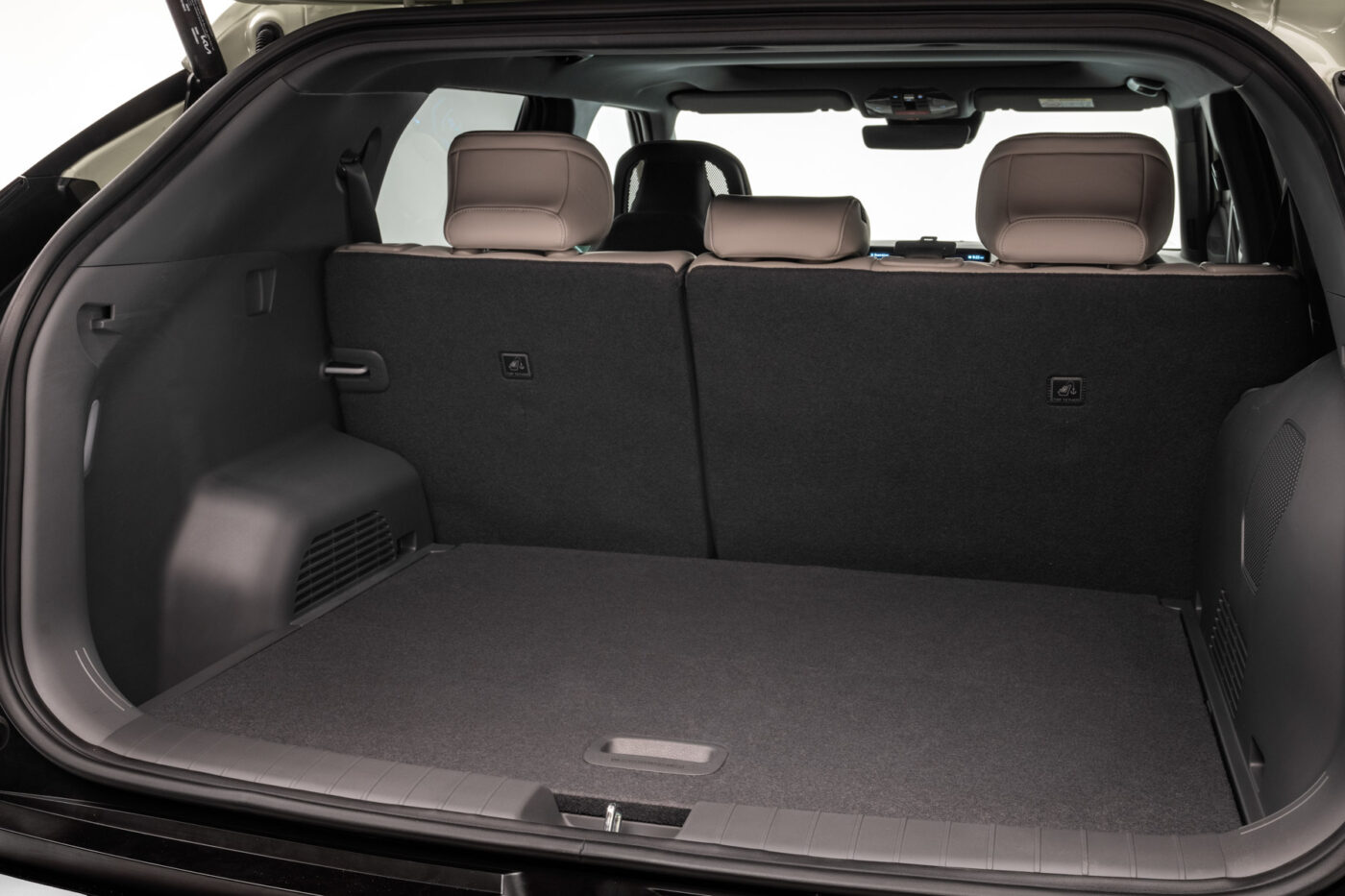
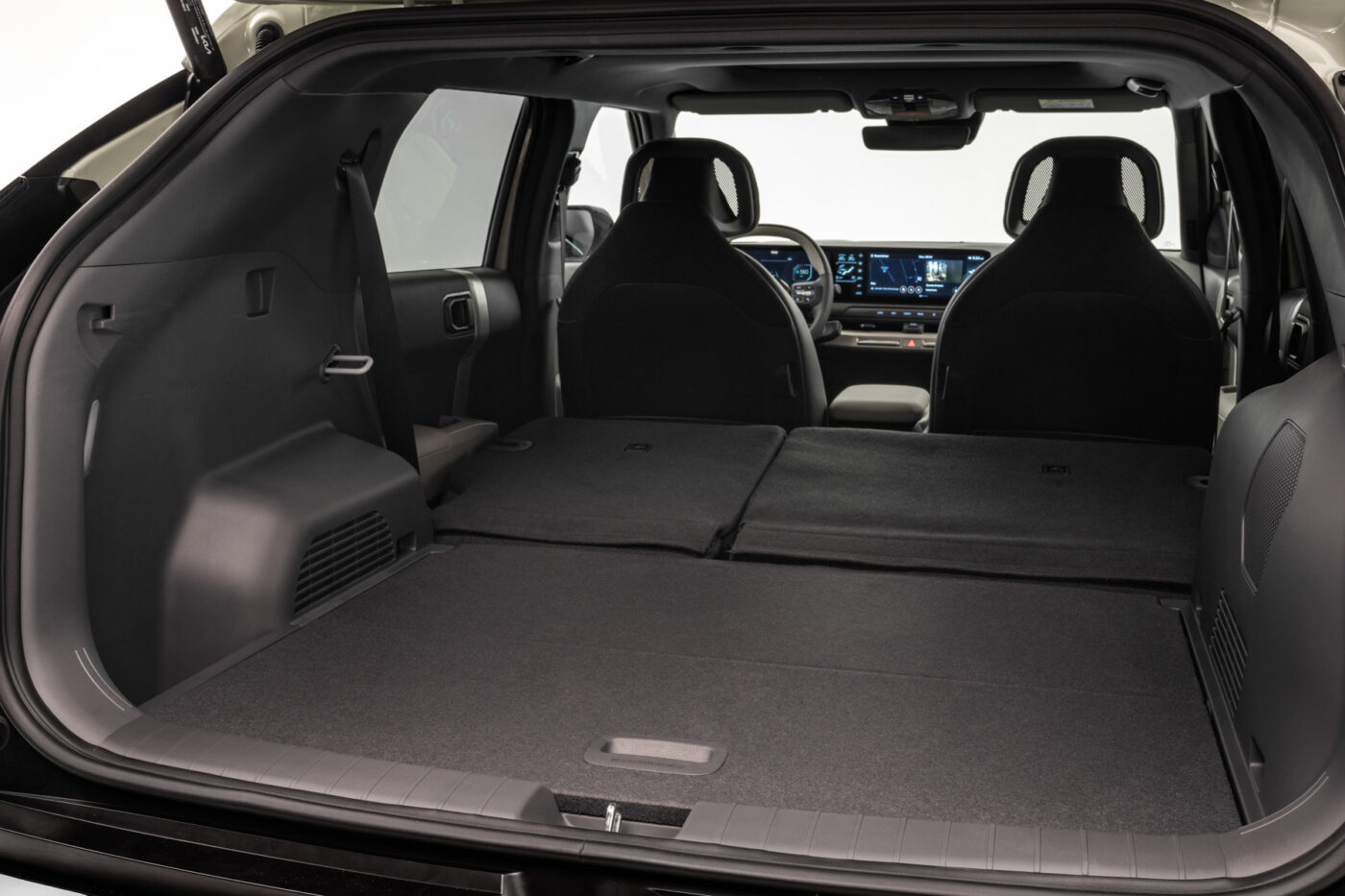
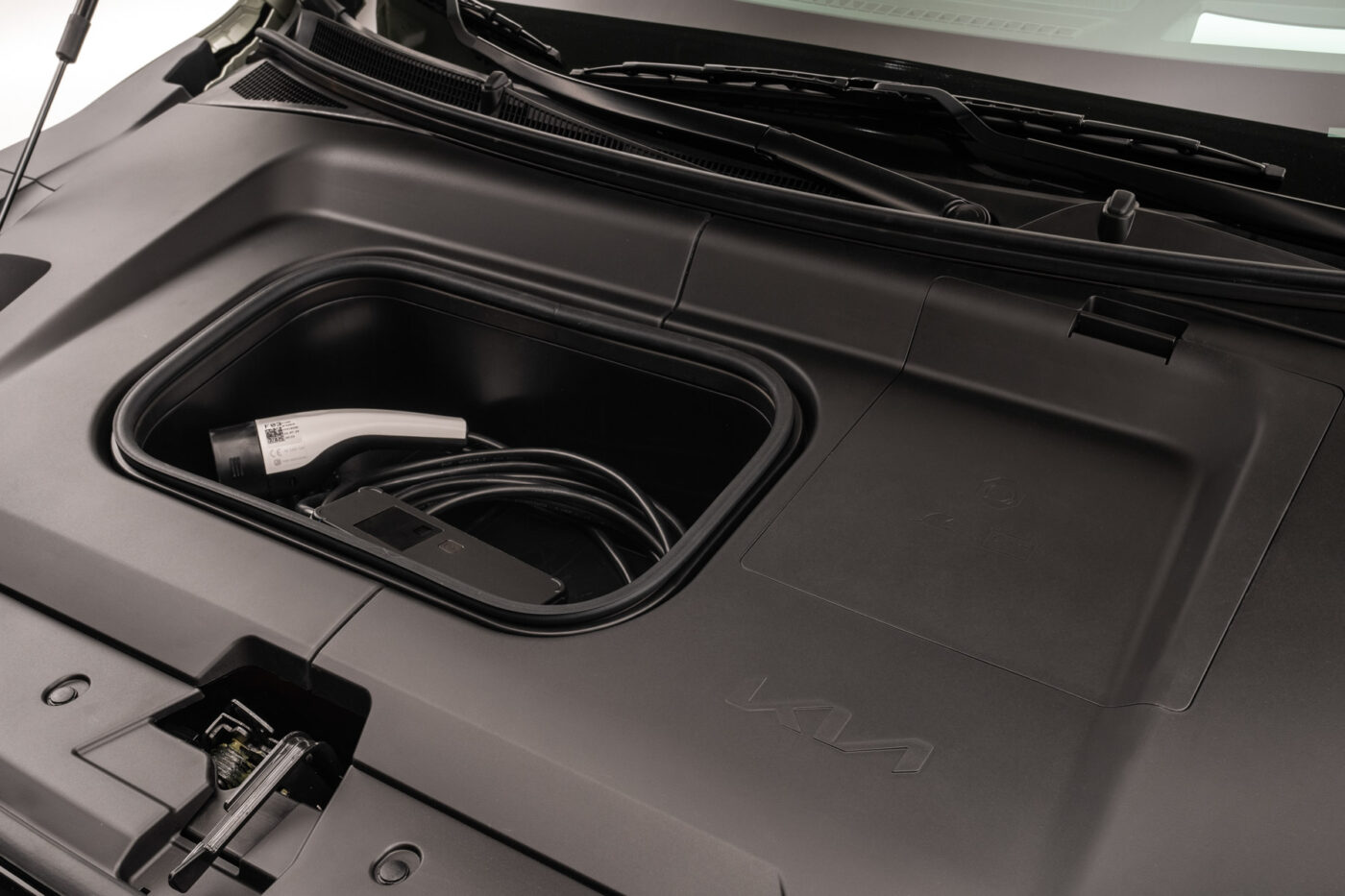
This division of the three displays, in combination with the integrated quick selection buttons under the centre screen and the steering wheel buttons, was designed to make it easier for the driver to concentrate on the road. With the head-up display and, according to Kia, improved voice control, the cockpit display and buttons are (theoretically) hardly needed.
In the press release for the EV3, Kia also highlights the new centre console. It has a storage compartment and a small table that can be moved and thus flexibly adapted to the occupants’ needs. Drinks, snacks or even a large handbag can be stowed in the lower storage area. Electronic devices such as laptops or tablets can be placed on the table during breaks.
While the use of recycled materials—totalling 28.5 kilograms—in the interior is almost standard at Hyundai and Kia, the EV3 also uses components made from recycled materials on the outside. Parts of the front bumper are made from recycled plastic from the automotive industry. The wheel arch is made from recycled industrial PET, and the side sills are also made from previously used plastics.
All-wheel drive and GT model coming in 2026
However, the recycled materials cannot hide that the EV3’s aerodynamics are not optimal. A steep front and a rather steep rear are necessary to achieve the large interior space with the compact dimensions. Indeed, the rear end tapers slightly towards the rear and Kia uses active air flaps and a 3D underbody cover that takes up 80 per cent of the surface area supposed to smooth the air flow under the vehicle. Nevertheless, the drag coefficient of 0.267 is not exactly record-breaking.
The prices at which the two variants of the EV3 will be available are not yet known – Kia intends to communicate these at a later date. However, it has already been confirmed that an all-wheel drive and GT version will be available in 2026. Here, too, a look at the EV5 could provide initial clues: Its all-wheel-drive version also has a 70 kW electric motor on the rear axle.

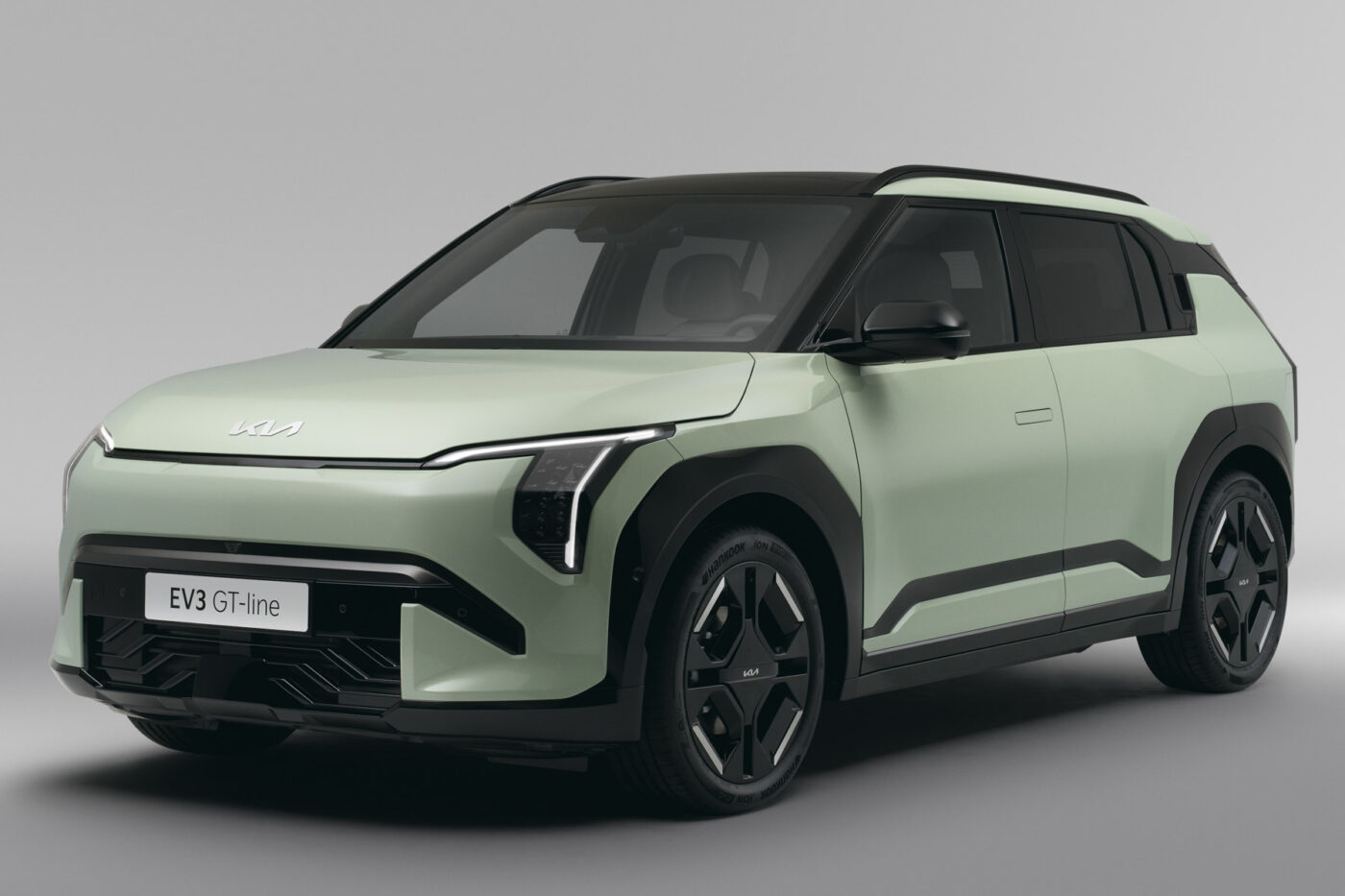



0 Comments